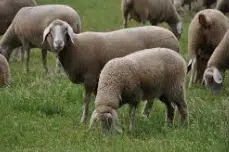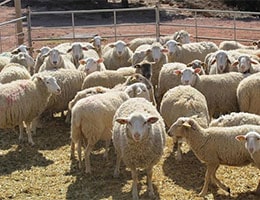 Ovino is a term from the Latin word ovis which translates as “sheep” . As an adjective , sheep qualifies sheep cattle (that is, those that have wool : a type of hair that is used for spinning and weaving).
Ovino is a term from the Latin word ovis which translates as “sheep” . As an adjective , sheep qualifies sheep cattle (that is, those that have wool : a type of hair that is used for spinning and weaving).
The concept of sheep can also be used as a noun to refer specifically to sheep . From these animals we mainly obtain wool , but also meat and milk .
The sheep, therefore, are the sheep. It is a hoofed mammal (its extremities end in a hoof or hoof), an artiodactyl (the extremities have an even number of fingers, resting at least two on the ground when walking) and a ruminant (its stomach has four cavities) whose male specimens have of spiral horns.
The male sheep is called a ram , leaving the name sheep to the females. The breeding of sheep, meanwhile, is called lamb .
Sheep have been very important throughout history . It is believed that sheep were among the first animals domesticated for agricultural purposes, since their milk and meat as well as their wool are used.
According to historical documents, this relationship of exploitation by humans towards sheep dates back thousands of years, approximately to the year 11,000 BC, when ancient Mesopotamia began to domesticate the wild mouflon with the objective of using their skins, their meat and their milk.
The development of sheep with the aim of obtaining different secondary products from sheep led to a series of crosses that resulted in a new breed, and all of this arose in western Europe and southwest Asia . The antiquity of a collection of statues that were found in some parts of Iran suggests that the exploitation of sheep for their wool may have begun much later, around the sixth millennium BC, although the first garments of Clothes made with this material began to appear about three thousand years later.
 In this context it is necessary to talk about shearing , the process that is applied to sheep to extract wool. This fiber has multiple uses, the most common being making clothing. Through milking, on the other hand, milk is obtained that is used to create cheeses and other products.
In this context it is necessary to talk about shearing , the process that is applied to sheep to extract wool. This fiber has multiple uses, the most common being making clothing. Through milking, on the other hand, milk is obtained that is used to create cheeses and other products.
Sheep meat, finally, is often mentioned as lamb meat . It is used to prepare multiple recipes , with the chop or rib as the most consumed part in many regions. Although the products obtained from sheep are almost the same as those obtained from cattle, their prices are usually much higher, which is why their consumption is less common.
In 1758, the Swedish scientist and zoologist Carlos Linnaeus classified domestic sheep, placing them in the species Ovis aries . Although some time later other studies showed that this species and its wild ancestor, Ovis orientalis (also called the eastern mouflon ), were part of the same species and should receive a single scientific name, in 2003 the International Commission on Zoological Nomenclature ruled that all should be grouped under Ovis orientalis .
This decision included the rest of the domestic species, which total eighteen, and the reason for mentioning them as their wild variety is to prevent some of the lineages from being considered subspecies of their own descendants. On the contrary, the scientific name Ovis orientalis currently predominates for sheep and Aries is used to refer to the domestic subspecies.
